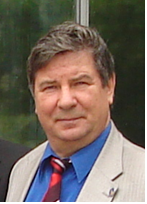
Prof. Teodor Narytnik graduated from the Kyiv University of Technology, the Faculty of Radioelectronics, in semiconductors and dielectrics. He obtained a doctorate in technical sciences, and defended his master’s thesis in 1979 in a special Scientific Council of the Research Institute “Istok” (Russian Federation) after completing postgraduate studies at the Faculty of Radiophysics of the Taras Shevchenko Kyiv National University. His research was devoted to paraelectric active elements for use in radio-electronic devices and special-purpose systems. The work is focused on the study of radio-electronic devices and systems, dielectronic and microelectronics, microwave technology, and terahertz telecommunication technologies.
Currently, Teodor Narytnyk works as the main researcher at the Research Institute of the National Technical University of Ukraine “Kyiv Polytechnic Institute” and is the part-time Head of the Joint Project “Institute of Electronics and Communication of the Ukrainian Academy of Sciences”. He has gained experience in many science and technology fields: radio engineering and computer science, in particular the development and improvement of terahertz telecommunications devices and technologies. He is the laureate of the State Prize of the Ukrainian SSR in the field of science and technology for the series of scientific and practical works “Dielectronics” (1983), the laureate of the USSR State Prize in the field of science and technology for the development of radioelectronic devices and systems for special satellite equipment (1989), as well as the Laureate State Prize of Ukraine in the field of science and technology for the development and practical implementation of television radio stations (1995).
He deals with, among others, the research and development of radio-electronic devices for creating a radio channel in the terahertz frequency range. In November 2022, he joined the CENTERA project.
Author of over 400 scientific publications, 125 patents for inventions and useful models, 9 training manuals, and 13 monographs.

